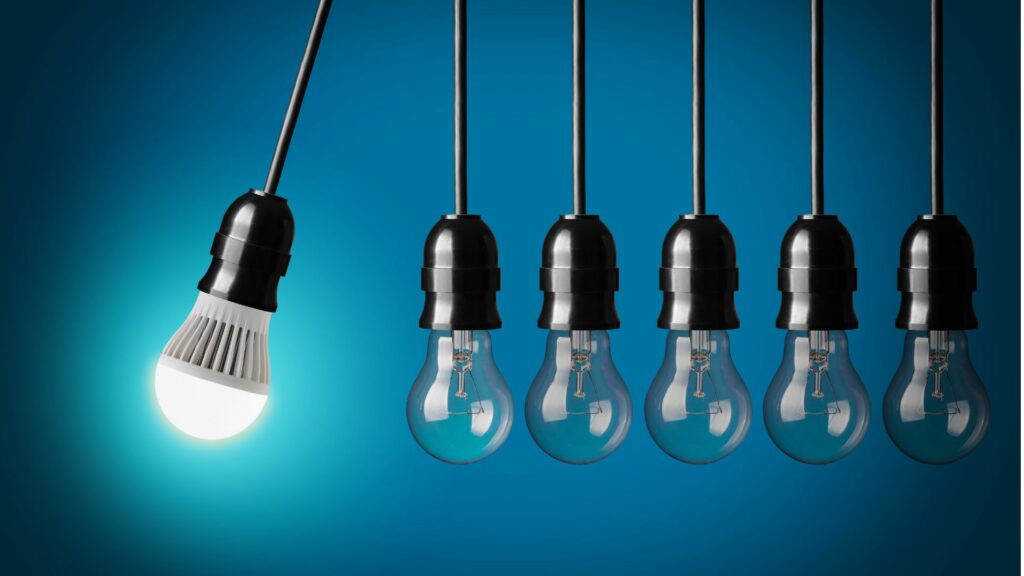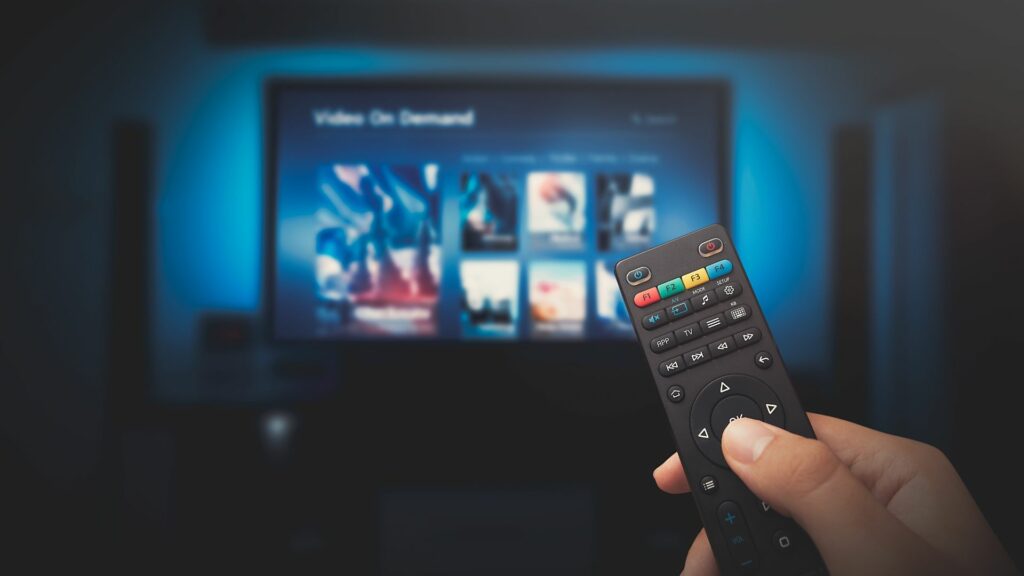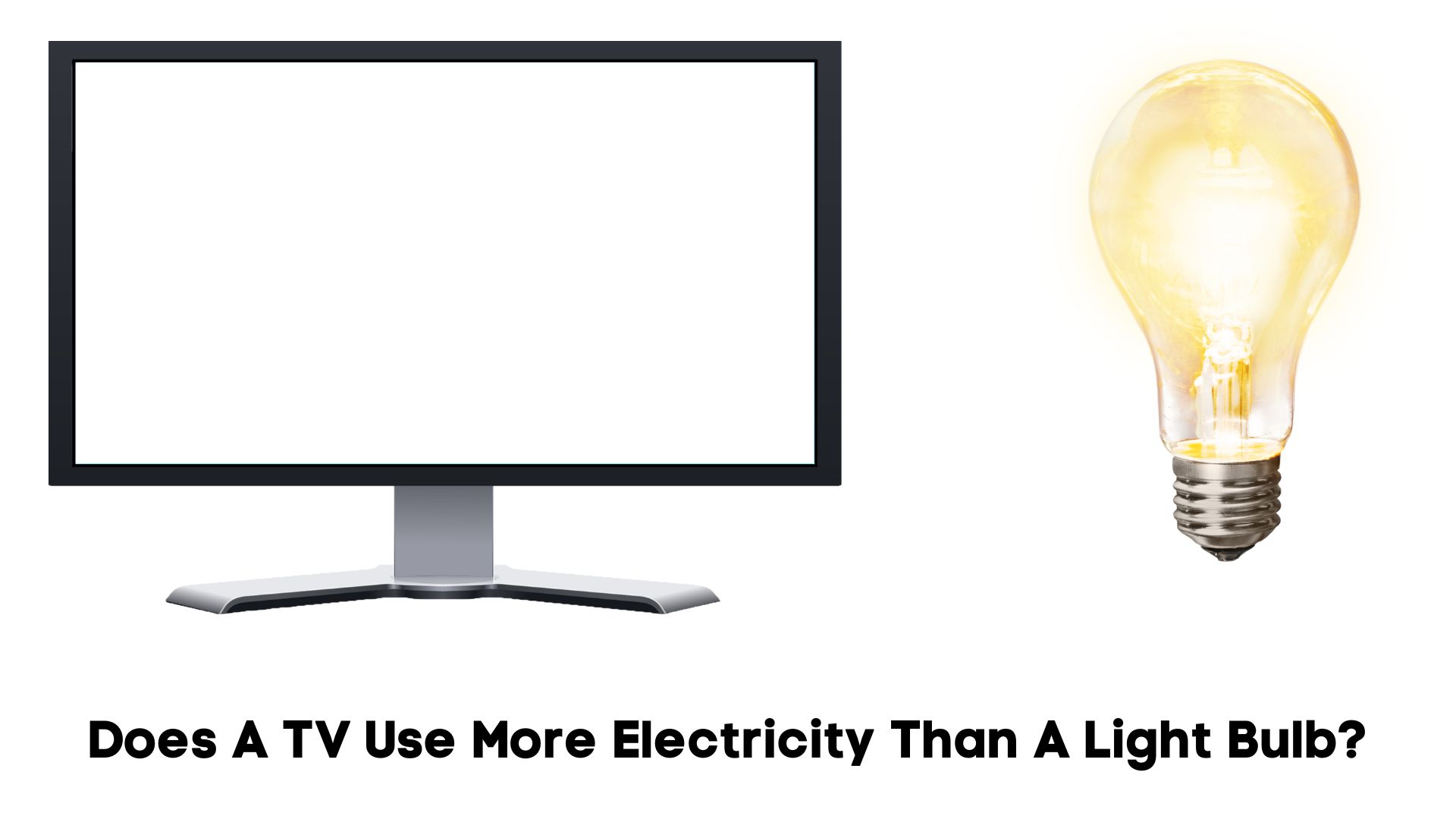Which device has a bigger impact on your utility bill, the TV or the light bulb? The guide below will tell you.
| Watt | Cost Per Hour | Cost Per 24 Hours | Cost Per Month | |
| TV | 170W | $0.0170 | $0.4080 | $12.41 |
| Light Bulb | 60W | $0.0060 | $0.1440 | $4.38 |
The figures in the table above apply the following assumptions:
- The light bulb uses 60 watts. The TV consumes 170 watts.
- The unit cost is $0.10.
- The TV and light bulb stays on for 24 hours.
Does your situation match this information? How much do you pay your utility company per unit? How many watts do your Television sets and light bulbs use? The answers to those questions will determine whether or not you can apply the information above to your situation. If your figures vary, use the following steps to calculate your TV and light bulb’s energy consumption:
- Use the nameplate on the TV to determine its wattage. Do the same for the light bulb.
- What if you can’t see the label? Use an ammeter to measure the flowing current. Multiply the amperage by the voltage to get the wattage.
- Divide the wattage by 1000 to get the kW.
- Multiply the kW by the usage to get the kWh. The usage refers to the number of hours you use the device per day.
- Multiply the kWh by the duration. For instance, if you want to know the cost of running a TV or light bulb per year, multiply the kWh by the number of days the device is used for the year.
Once you determine the TV’s annual energy consumption, compare it to the light bulb’s yearly energy consumption. If you don’t understand the results, multiply the annual kWh by the unit cost. This will show you the amount you can expect to pay for each device.
Common sense will tell you that a TV uses more power than a light bulb. You will come to this conclusion by simply looking at both devices. Light bulbs are small. Some of them use as many as 100 watts. However, others use as little as 8 watts.
The United States Department of Energy commissioned a study (U.S. DOE Residential Lighting End-Use Consumption Study) that investigated lamp usage and energy consumption in the country. The study concluded that the United States uses an average of 47.7W per lamp.
Compare those figures to the average TV set, which uses 150 to 200 watts (according to Inspire-Clean-Energy).
With that in mind, can you conclude that a TV is more expensive to run than a light bulb? No, you cannot. Consider the following factors:
- Direct Energy has observed that electronics constitute 4 percent of your home’s energy consumption. Those electronics include TVs and gaming consoles. On the other hand, 9 percent of your home’s energy consumption goes to lighting.
- Globally, a paper in the Journal of Architectural Engineering Technology (Ayesha Muneeb, University of Engineering and Technology, Pakistan) has found that 30 percent of total energy consumption goes to building lighting systems.
- TV and light bulb usage continue to grow with each passing year. However, the demand for light bulbs is increasing at a much faster rate. This is because TVs are a luxury. Many households in developing nations that can’t afford to buy TVs own multiple light bulbs.
- Even though one light bulb has a lower wattage than a TV, people don’t buy one light bulb. You will find dozens of light bulbs in a single household. This contrasts sharply with TVs. A 2009 Nielsen study found that Americans have an average of 2.8 TV sets per home. That was a slight increase from 2.0 TV sets in 1990 and 1.57 TV sets in 1975.
- The figures in the table above assume that you kept the TV on for 24 hours per day all month. But that doesn’t happen. People use their TVs for two to five hours at a time, particularly during the weekdays. Light bulbs are the opposite. Most of you have seen commercial buildings whose lights are on 24 hours a day, seven days a week.
With these considerations in mind, you can see that light bulbs use more electricity than TVs. You have more light bulbs in a house, and they get more use.
Factors That Affect Energy Consumption
The factors that affect energy consumption vary depending on the device. Consider the following:
Bulb

- Wattage
This is the one factor light bulbs, and TVs have in common. Some bulbs have a higher wattage than others. Laypeople associate the wattage with brightness, but that is a mistake. Brightness depends on the lumens. Then again, the brighter the light, the higher the wattage.
Consider the table on the Perch Energy platform. You can see that wattage increases with the lumens (brightness).
- Bulb Types
The bulb type directly shapes energy efficiency. Incandescent bulbs are the worst. A paper in the Scientific World Journal noted that a current in an incandescent bulb raises a filament’s temperature to 4,000 degrees F. This is why the bulbs waste so much energy as heat.
CFL and LEDs are better because they last longer. A 27W LED bulb can produce the same brightness as a 100W incandescent bulb.
- Usage Pattern
If you manage a commercial building, the lights will wreak havoc on your utility bill because they must stay on 24/7. But if the setting is residential, you can afford to keep the lights off during the day. The more usage the bulbs get, the more power they will consume.
TV

- Screen Size
Energy consumption increases with the screen size. The largest TVs have the highest watt rating.
- Brightness
Brightness has the same impact on TVs and bulbs. The brightest settings are attractive because they improve image quality. However, they also use more power.
- Resolution
You want as many pixels as possible to enhance the colors and image sharpness. Unfortunately, TVs with a higher resolution use more power to fill the screen.
- Usage Pattern
Nielson believes that consumers watch roughly four hours of TV per day. This gives TVs the edge over bulbs because bulbs can stay on all day and night. People only switch TVs on when they need to watch something.
Tips For Reducing Energy Usage And Saving Money On Electricity Bills While Using TV and Light Bulbs
1). Use energy-efficient bulbs. A 60W incandescent bulb uses 0.42kWh per week and 1.83kWh per month. Energy Sage recommends replacing it with a 10W LED bulb that uses 0.07kWh per week and 0.30kWh per month.
2). Disconnect every device that isn’t in use. You don’t have to keep your light bulbs on during the day. Switch them on at night when the ambient light disappears.
3). Don’t leave the TVs on standby mode. Pull the plug out of the outlet.
4). Use exterior lights with motion detectors. The lights will only turn on when they sense movement. In other words, you don’t have to keep the exterior lights on all night.
5). Buy electronics with a decent Energy Star rating.
6). Reduce the brightness. This applies to both TVs and bulbs. You can buy and install bulbs with dimming mechanisms. Don’t use the highest brightness settings unless the need arises.
7). Replace old bulbs and TVs. Modern bulbs and TVs are more energy-efficient.
8). Use solar panels to run the light bulbs. You can do the same for the TV.
Related post:

